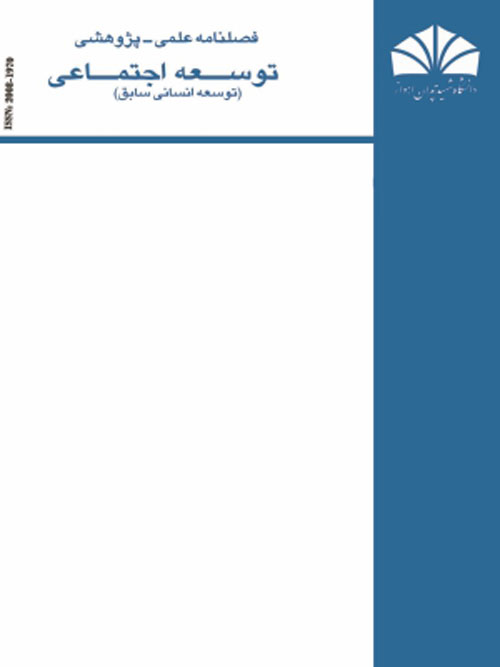فهرست مطالب

فصلنامه توسعه اجتماعی
سال چهارم شماره 3 (زمستان 1388)
- تاریخ انتشار: 1390/10/11
- تعداد عناوین: 6
-
-
Page 2It is a known fact that women have equal capacity to enhance the society. The inability of a country to use its female labor force efficiently slows down its speed of social, cultural and economic development. Therefore, the emphasis of this study is on inequality amongst Iranian women's scientific members at universities compared to men. By using statistical method, and Chi-Square technique in this article the main variables, institutional and social factors, sex discrimination, restrtions of women, and women's position and status have been analyzed. The questionnaires that have been filled by Iranian professors or lecturers have been analyzed and it shows that both the following hypotheses are confirmed. 1) Social factors are barriers for Iranian women to participate in university activities, 2) Institutional factors are barriers for Iranian women to participate in university activities.
-
Page 5The purpose of this research is to study the factors affecting discrimination between employed women and men in management position in governmental organization. The research is a survey type using descriptive and analytical methods. The statistical sample size is 521 women and men (411 female and 110 male). They were selected through random sampling method in the capital city of Iran (Tehran). Data are collected through interview and questionnaires, and Likert type scale is applied. Result indicated that, there is positive relation between women better status and women management posts in governmental organizations, and 'there is negative relation between patriarchy and women better status in governmental organization, overall 'occupational status has not been distributed equally between employed women and men at the same situation in governmental organizations in Iran'.

